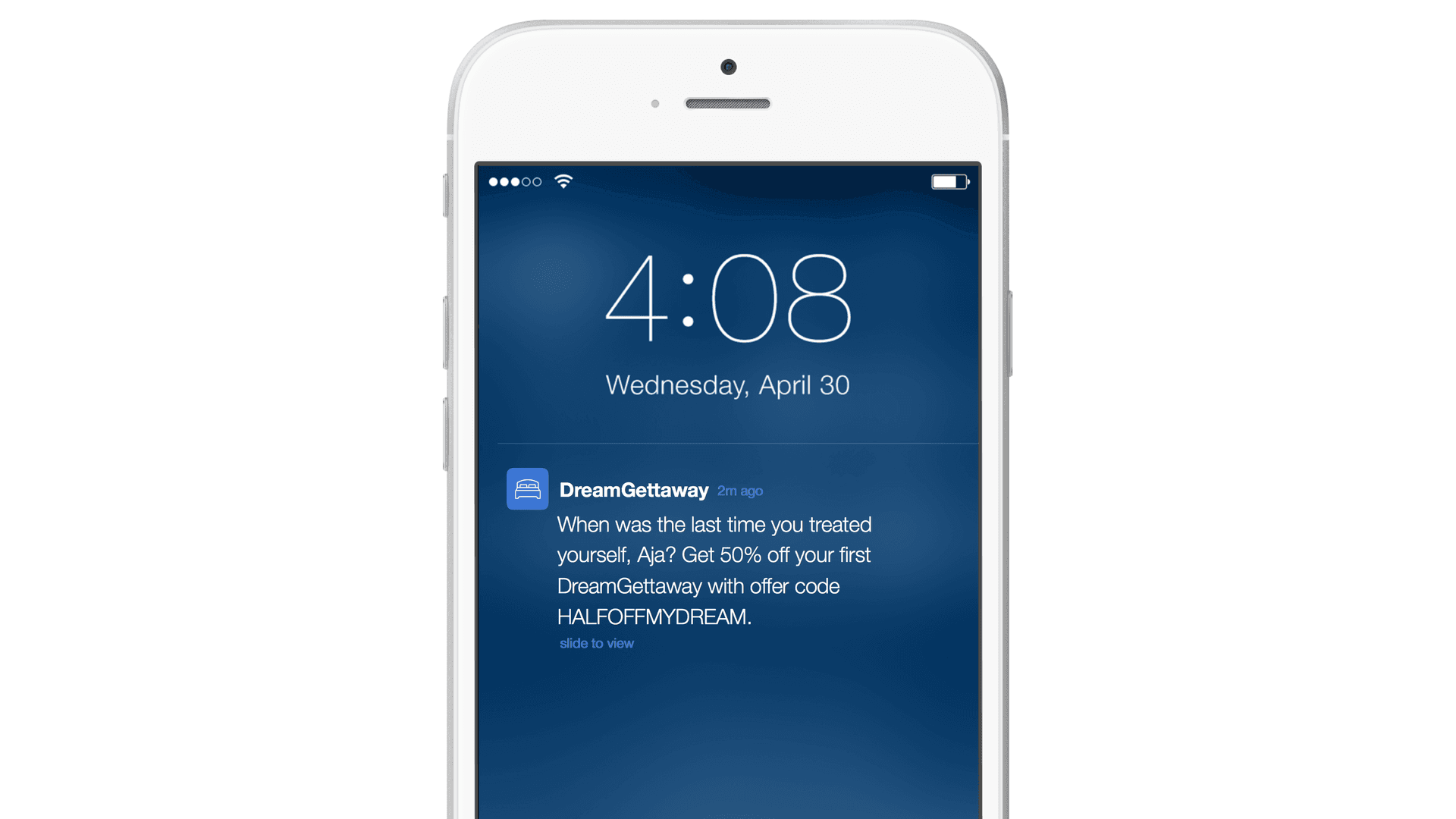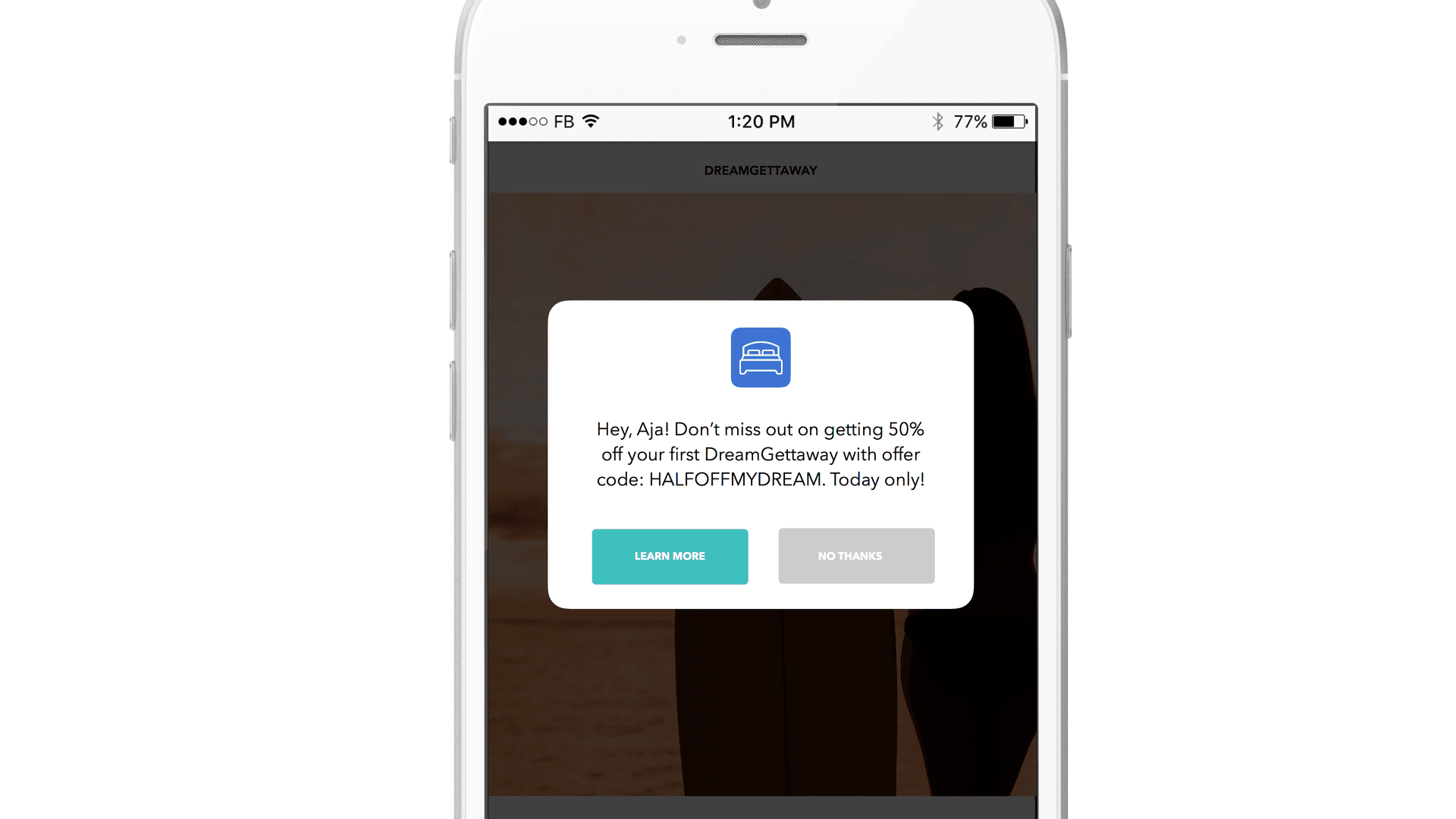What Every Marketer Should Know About Message Retargeting
Published on January 24, 2017/Last edited on January 24, 2017/6 min read


Team Braze
When driving across the country on road trips, one of the ways I pass the time is by looking out for billboards. Amidst the clutter of ads in busy cities or in the long stretches of open road in rural areas, I look for clever taglines and products I’ve never heard of. Occasionally, I come across a message that really gets me, knows what will make me react. But while that’s a rare thing to see in the physical landscape, it doesn’t have to be in the digital one.
One of the most exciting things about being a marketer in today’s the mobile-first era is the ability to specifically craft, tailor, and hone marketing campaigns that are truly meaningful, relevant, and personalized to each individual on the receiving end. And message retargeting is a powerful way to do just that.
What is message retargeting?
If a message sent with no targeting is the equivalent of a big billboard aimed at the masses, a targeted message is a billboard that includes the recipient’s name and other relevant information—and that makes retargeting a second billboard that a potential customer sees after failing to act on the message contained in the initial one.
In other words, retargeting is your second-chance campaign. You’ve probably seen or even sent such campaigns without even realizing it. Abandoned shopping cart notifications, which retarget customers who start (but don’t finish) a purchase with a reminder via email or push, are a perfect example of this.
How messaging retargeting differs from ad retargeting
Messaging retargeting is completely organic. You’re retargeting your owned audience, whose data—including email and mobile information—you have collected via your CRM, along with specific engagement activity detailed above. And you are simply using your existing channels, email, push, in-app, and News Feed Cards, to communicate with them in more granular and specific ways to have more meaningful interactions.
Ad retargeting is not organic: It is a paid strategy. As Moz explains, “It is a form of marketing in which you target users who have previously visited your website with banner ads on display networks across the web.”
What actions can marketers use to retarget messages?
Campaign retargeting allows marketers to send specific messages to select audience segments based on actual interactions with previous campaigns across different channels, including email and mobile. Some of the customer activities you can retarget messages based on include:
- Receiving/not receiving a given campaign
- Receiving a campaign before or after a specific date or number of days
- Opening/not opening:
- Emails
- Push notifications
- Viewing/not viewing:
- In-app messages
- Clicking/not clicking:
- Buttons or the bodies of in-app messages
- Emails
- Converting/not converting based on previous messages
In addition, marketers can focus on combinations of these customer activities, such as people who open push notifications but do not open emails, people who don’t open either, and so forth.
How messaging retargeting works
Let’s say a hypothetical ecommerce app, DreamGettaway, has a campaign focused on current users who’ve never purchased a travel package. In an initial campaign, DreamGettaway could offer a promotion, such as a discount on any vacation package purchased via the app, and it could market the special offer via an in-app message or other channel.
Campaign A (initial targeting)
- Money customer has spent in the app: $0
- App activity: Customer active within last 14 days

Campaign B (message retargeting)
- Money customer has spent in the app: $0
- Received push notification: HALFOFFMYDREAM promotion

With the retargeting message, not only can DreamGettaway give the copy and design a refresh as well as add more urgency, the marketing team can also choose to send the message via a different channel. For instance, if the initial campaign used push notifications, the follow-up could leverage in-app messages. This lets marketers take advantage of all the strengths of multichannel marketing, which allows companies to reach their customers where they’re most likely to engage and respond, boosting the overall effectiveness of promotions and potentially increasing customer retention by 130%.
What messaging channels can be used (and when is best to use them)
All four of your main messaging channels can be used for retargeting, and here are the best practices to keep in mind when using each.
News Feed Card-based retargeting campaigns
- These campaigns reach anyone who is active in your app or on your website
- To get people outside of your app to see these messages, you can try deep linking them here via push notifications, or using email
- These messages stay within your app or website’s messaging center, and, unlike other channels, you have the final say on how long they’ll be visible for the customer, so just because someone doesn’t engage with this on the first viewing, they may at a later date
Push notification-based retargeting campaigns
- With push, you can reach anyone who has opted in for push notifications via app, wearable, or web notifications
- The thing to remember here is not everyone is opted into these messages, and, sending too many can lead to app uninstalls
- This outreach works best for urgent messages and for re-engaging lapsing customers
Email-based retargeting campaigns
- If customers don’t convert via push notification, you can increase your chances of having your message be seen and engaged with if you follow up via email
- Doing so will help you learn which channels your customer prefer and will help you improve future outreach
- Of course, not everyone is subscribed to your email list,, and not everyone who is subscribed engages regularly or at all
In-app message-based retargeting campaigns
- In-app messaging allows you to meet your audience where they are, in your app or on your website; unlike News Feed Cards, these are short-lived messages
- Anyone on your website or in your app will see these messages (whether they choose to engage or not is a different matter)
- This is a good channel to use if the customer has opted out of email or push notifications or simply isn’t as engaged with those channels
- Don’t overdo it with messaging; if customers simply aren’t responding to a given promotion on any channel, it may not be the right way to engage them
Get started with messaging retargeting
Mobile marketing CRMslike Appboy’s are designed to provide support for retargeting customers based on messages they’ve received and how they’ve engaged. To take things to the next level, here are tips and ideas for easy, effective retargeting campaigns to execute with your CRM.
Be Absolutely Engaging.™
Sign up for regular updates from Braze.
Related Content
View the Blog
A day in the life of a data scientist on the BrazeAIᵀᴹ forward-deployed engineering team

McKay Jensen

The new inbox reality: How iOS changes are reshaping email marketing

Aparna Prasad

Experience optimization: Turning data insights into better journeys
